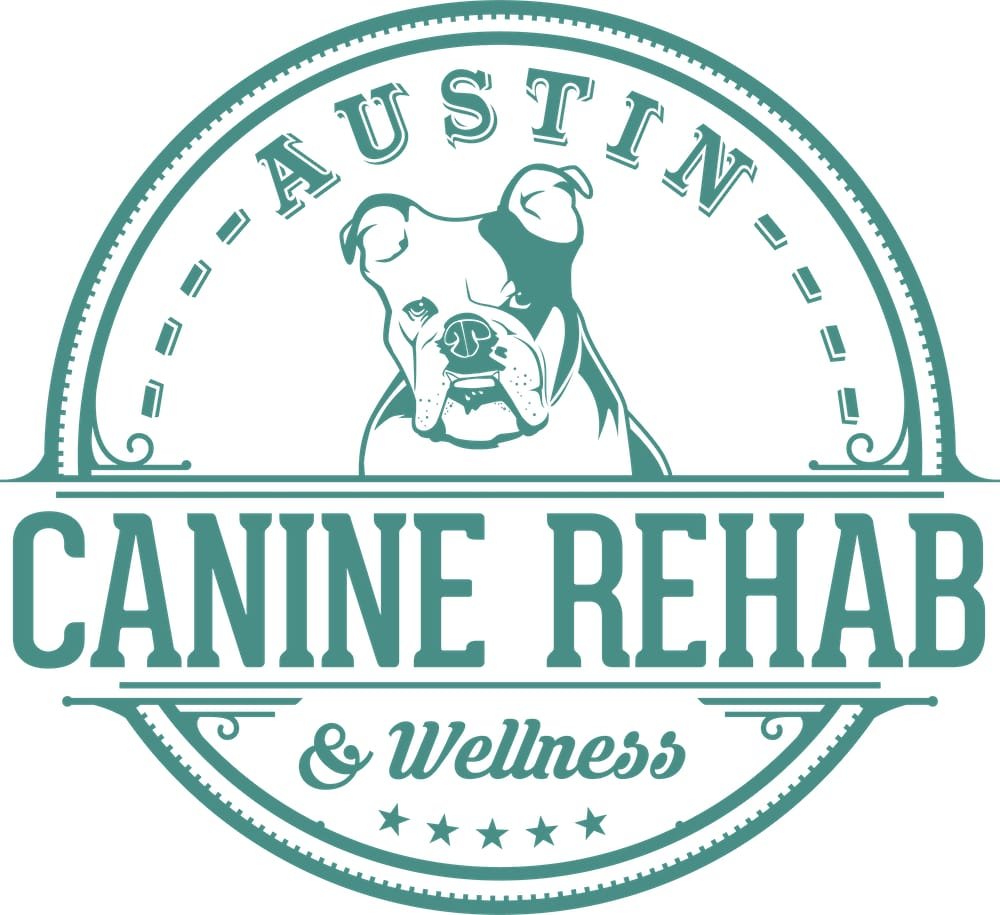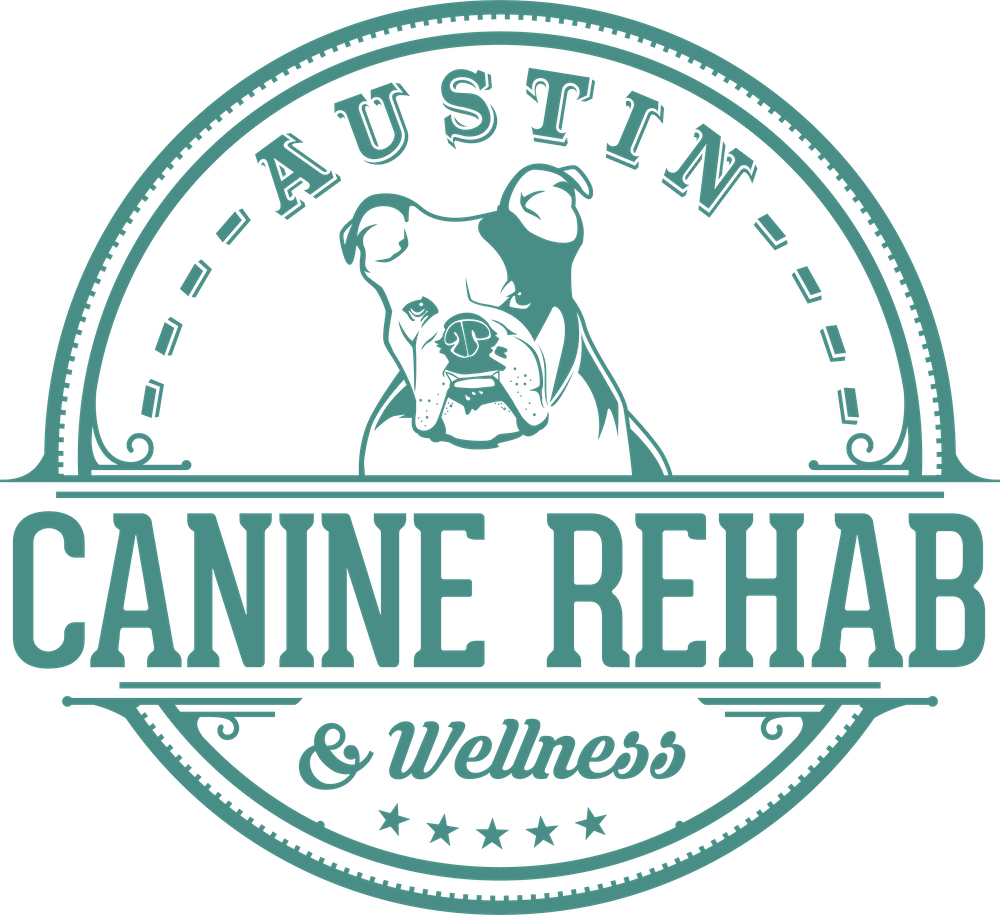
We specialize in helping SENIOR DOGS regain their independence & ability to explore Austin with their humans.
Dog Arthritis Treatment Through Canine Rehabilitation

According to the American Animal Hospital Association (AAHA), roughly 1 in 5 of dogs experience mobility or joint pain problems. Although it’s natural for dogs to slow down a bit as they get older, severe joint or mobility pain from arthritis is not. (1)
Fortunately, there are ways to help a dog that’s struggling with arthritis. Because pain and immobility from arthritis can significantly impact a dog’s health and spirit, it’s essential to get the treatment a dog needs.
Knowing the signs and symptoms of canine arthritis, identifying early warning signs, and seeking the treatment options through canine rehabilitation can slow the progress of arthritis and keep your dog healthy.
Can Dogs Get Arthritis?
Just like humans, dogs can also develop arthritis, which is a condition categorized by inflammation at the joints. Arthritis is a long-term (chronic) condition with no cure. There are, however, interventions that pet owners can do to relieve arthritis symptoms and improve mobility.
Arthritis in Dogs
Arthritis shows up differently in every dog. Some dogs might not show any noticeable signs of arthritis, while other dogs may display visible pain while performing simple tasks. At its worst, arthritis can become so disabling and painful that a veterinarian may recommend euthanization.
Canine arthritis doesn’t happen overnight, so you should be on the lookout for subtle clues in your senior dog. The condition typically starts out as mild symptoms, then worsens as time progresses.
How quickly a dog with arthritis becomes ill depends on a variety of factors, like the dog’s health status, genetic makeup, and activity levels.
Types of Arthritis in Dogs
The three most common forms of canine arthritis are osteoarthritis, immune-mediated polyarthritis, and septic arthritis. Although all these conditions involve inflammation of the joints, they’re caused by different factors.
Osteoarthritis in Dogs
Joints are vulnerable areas because they connect two or more bones together. Most joints are held together by the joint capsule. The joint capsule is made up of durable fibrous tissue, synovial fluid, and cartilage. The synovial fluid lubricates the joints and allows for smooth movement. Cartilage covers the ends of the bones and reduces friction.
Osteoarthritis, also known as degenerative joint disease or DJD, damages this joint area. This type of arthritis is the most common in dogs, with more than 20% of dogs over a year old affected by the condition. Osteoarthritis is caused by the gradual deterioration of the cartilage at a dog’s joints. (2)
Over time and constant use, the cartilage wears away and becomes brittle and dry. In cases of severe osteoarthritis, the cartilage at the joints may detach from the bone. Large or overweight dogs are more likely to develop osteoarthritis, because the excessive weight can place significant stress on a dog’s joints. (3)
Septic Arthritis in Dogs
Septic arthritis occurs due to a bacterial, fungal, or viral infection. In septic arthritis, the joint becomes infected and inflamed, leading to arthritis. It can be caused by joint surgery, physical injury, osteoarthritis, systemic infections (Lyme disease), etc. As with most types of arthritis, larger breeds are at a higher risk of developing septic arthritis.
Immune-Mediated Polyarthritis in Dogs
Immune-mediated polyarthritis, or simply referred to as polyarthritis, develops when a dog’s immune system mistakenly attacks healthy cells in the body. Polyarthritis typically affects all joints and is caused by genetics, medications, or disease.

Signs of Arthritis - What To Look For
Determining how to detect arthritis in your aging dog may be difficult, because most dogs tolerate chronic pain in silence. Obvious symptoms don’t usually appear until the joints are badly damaged, so it’s essential to look for small clues about your dog’s health status.
If your dog is middle-aged or older, you may want to look out for the following signs of arthritis:
● Limping or Stiffness
● Taking more time than usual to stand up
● Reluctant or refusing to jump onto the bed or couch
● Difficulty getting into the car
● Slower on walks or runs
● Less tail wagging
● Lying down with legs spread out
● Weight gain
● Irritability or Changes in behavior
● Difficulty getting into the right position to urinate or defecate
● Accidents in the house
● Pain when touched
● Gnawing or licking at joints
● Hesitant to play
What Breeds are Most Prone to Arthritis?
Although small dogs are still susceptible to arthritis, it is larger or giant dogs that are at a higher risk. Some breeds like Rottweilers and Golden Retrievers are more likely to have a genetic tendency toward developing hip dysplasia, which leads to arthritis in hip joints.
The breeds that are the most prone to arthritis are:
● Bernese Mountain Dogs
● Great Danes
● Rottweilers
● German Shepherds
● Golden Retrievers
● Labrador Retrievers
● Newfoundlands
● Mastiffs
● Springer Spaniels
How is Arthritis Diagnosed in Dogs?
If you suspect arthritis in your dog, it’s a good idea to pay a visit to your veterinarian. Your vet can confirm a diagnosis through an assessment and x-rays, if necessary. A veterinarian can also recommend treatments like medication, at-home intervention, and canine rehabilitation to keep arthritis pain at bay.
Treatment Options
A multimodal treatment plan works best to target arthritis symptoms. These plans include:
● Pain Control via Prescription Medications & Supplements
● Weight Management
● Regular Low-Impact Exercise
The goal of treatment for canine arthritis is to improve a dog’s quality of life. By reducing the pain and discomfort brought on by arthritis, dog owners can ensure their dog’s well-being throughout their lifetime.
Prescription Medication from Your Veterinarian
Your veterinarian may suggest a non-steroidal anti-inflammatory (NSAID) to alleviate arthritis pain and inflammation. Dosages typically depend on a dog’s weight and size.
Can you use human medications for your dog? It’s not recommended! As convenient and harmless as this may seem, human medications can be toxic for dogs. For example, NSAIDS that are meant for human consumption, like Ibuprofen and Naproxen, are harmful for pets.
Joint Supplements
Like their human owners, aging dogs sometimes need nutritional supplementation. Joint supplements can both prevent and alleviate arthritis in dogs. The following are the most common joint supplements used for arthritis in dogs. (4)
Glucosamine
Similar to humans, a dog’s body produces glucosamine naturally to help repair damaged tissues like cartilage. Over time, however, a dog’s body begins to slow its production of glucosamine. Glucosamine supplements boost the levels of glucosamine within the body. The increased glucosamine levels support joint cartilage, thickens the fluid at the joints, and allows dogs to remain active for as long as they can.
Chondroitin Sulfate
Though not as well known as glucosamine, chondroitin sulfate is similar to glucosamine in that it’s also naturally produced in the body. As with glucosamine, chondroitin sulfate production slows with age. While glucosamine assists with joint repair, chondroitin promotes elasticity and lubrication at the joints.
Omega-3 Fatty Acids
Omega-3 fatty acids are beneficial for aging joints due to their anti-inflammatory properties. These unsaturated fatty acids are found in oily fishes and other food sources, but not in sufficient amounts to provide pain relief or reduce joint inflammation. Omega-3 fatty acids work well when administered with other joint supplements or anti-inflammatory medications.
Weight Management
According to the American Animal Hospital Association, over half of all pets are overweight or obese. If your dog is overweight and struggling with arthritis, your veterinarian or canine rehabilitation specialist will likely place your dog on a weight management program. (1)
However, it’s not only overweight dogs that can benefit from weight management. As a dog becomes less active due to old age or pain, they may lose muscle mass and develop body fat instead. The reduction in muscle tone — combined with an increase in body fat — places additional strain on a dog’s painful arthritic joints, even if a dog is not obese. Weight reduction helps to lighten the load on joints for dogs of any size!
A crash diet or severe calorie restriction is typically not recommended. Most dog owners will see weight changes simply by limiting treats and slowly cutting back on mealtime calories. Sometimes, losing just a few pounds can ease pain and boost a dog’s mobility. What’s more, maintaining a healthy weight helps ensure a longer, healthier life for your dog.
Regular Low-Impact Exercise
A major part of any treatment program for arthritis in dogs is low-impact exercise or physical rehabilitation. To maintain mobility and range of motion in inflamed joints, it’s essential to encourage a dog with arthritis to move.
It might seem counterintuitive to move painful joints, but allowing your dog to remain sedentary only stiffens the joints and encourages more swelling. Therefore, exercise and physical rehabilitation are key to slowing the progression of arthritis in dogs. (1)
Unfortunately, movement may be especially stressful and painful, which is why choosing the right exercises — and getting professional rehabilitative assistance when necessary — makes all the difference for a dog with joint inflammation.
Short and Light Walks
Activities with a lot of jumping and running might not suit your arthritic dog’s joints, but your dog can still enjoy leisurely walks. Short walks at a pace that your dog is comfortable with may provide enough movement to keep joints flexible, and it’s an activity that can be done at home. Hour-long fast-paced walks may be out of the question, but your dog can still get exercise and enjoy stimulation from shorter and more frequent strolls.
Impact-Free Games
As much as they’d like to play, games that call for running and jumping can be uncomfortable for a dog with arthritis. A canine rehabilitation specialist can provide you with a list of impact-free activities to enjoy with your dog. Activities that deliver exercise without impacting painful joints are vital for maintaining mobility and keeping a dog’s spirits up. Tug-of-war, for example, allows a dog to move without putting pressure on sensitive joint
Canine Rehabilitation for Dogs with Arthritis
A clinical massage works for dogs much in the same way it benefits their owners. Arthritic dogs have special needs when it comes to massages, therefore a massage should only be done by a professional. Clinical dog massage consists of muscle tissue manipulation and the release of fascial tissue to rehabilitate injured soft tissue areas.
Along with maintaining elasticity in the joint area, massages prevent muscle adhesion. Adhesions trigger friction with movement, leading to painful and inflamed joints. Therefore, clinical canine massages make an arthritic dog’s muscles less likely to form adhesions.
Research published in 2021 that samples 527 dogs found that therapeutic massage is an effective treatment for musculoskeletal pain in dogs. Consistent massages are especially therapeutic for a dog with arthritis, because massages maintain elasticity in tendons and ligaments. (5)
When Surgery is the Only Option
Most cases of canine arthritis are treatable without surgery. Surgery is not a cure for arthritis and doesn’t return the joints to normal, but it can relieve pain and improve range of motion. For dogs who are not tolerant of medications and are experiencing severe pain, surgery may be an appropriate choice. (1)
The three primary types of joint surgery for arthritis in dogs are:
● Joint replacement
● Joint fusion
● Removal of part of a joint
After surgery, veterinarians may recommend professional canine rehabilitation to promote adequate healing and improve a dog’s mobility. (1)
What Can You Do?
Modify Your Home to Accommodate For Your Aging Dog
If you notice signs of arthritis in your dog, it might be time to start modifying your home to make it a comfortable and safe haven.
Rather than have dog food bowls flush against the floor, you may need to elevate them. Bending down can be painful for an arthritic dog, so make meals comfortable by raising the height of dog food bowls. You can also improve the area your dog sleeps by purchasing an orthopedic bed. An orthopedic bed takes pressure off a dog’s joints, making for a more restful sleep.
Dogs with arthritis need help getting to areas that they could have easily jumped onto in the past. Installing small step stools or stairs enables an arthritic dog to get to their favorite places, like the couch or bed, without causing them pain. A canine rehabilitation specialist can work with you to make your home a safe and comfortable place for your pet.
Seek Arthritis Treatment for Your Dog
Early intervention can slow the progression of arthritis in dogs. By being proactive, you can ultimately reduce the pain and distress your dog might experience when it comes to arthritis.
If you're interested in joint rehabilitation for your senior dog, speak with an experienced Certified Canine Rehabilitation Therapist today. Keep arthritis pain away with the help of the professionals at Austin Canine Rehab & Wellness. Your fur-ever friend deserves the best treatment!

References
American Animal Hospital Association (AAHA). Mobility Matters https://www.aaha.org/globalassets/05-pet-health-resources/mobilitymatters.pdf
Risk Factors for Canine Osteoarthritis and Its Predisposing Arthropathies: A Systematic Review https://www.ncbi.nlm.nih.gov/pmc/articles/PMC7198754/
American College of Veterinary Surgeons (ACVS). Osteoarthritis. https://www.acvs.org/small-animal/osteoarthritis-in-dogs
Pet MD, A Vet Talks About the Best Ingredients for Joint Supplements for Dogs https://www.petmd.com/dog/wellness/vet-talks-about-best-ingredients-joint-supplements-dogs
British Veterinary Association. Effect of massage therapy on pain and quality of life in dogs: A cross sectional study https://bvajournals.onlinelibrary.wiley.com/doi/full/10.1002/vetr.586




